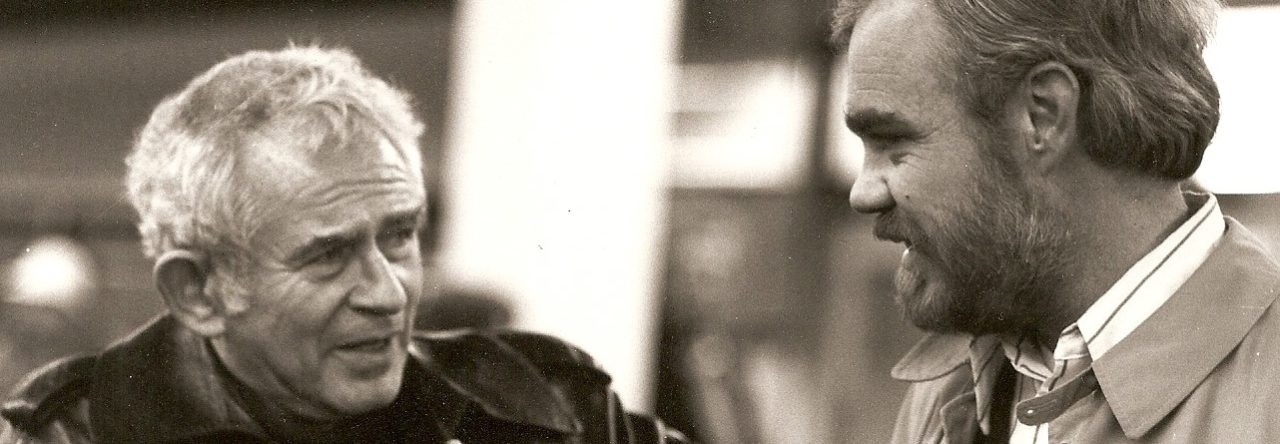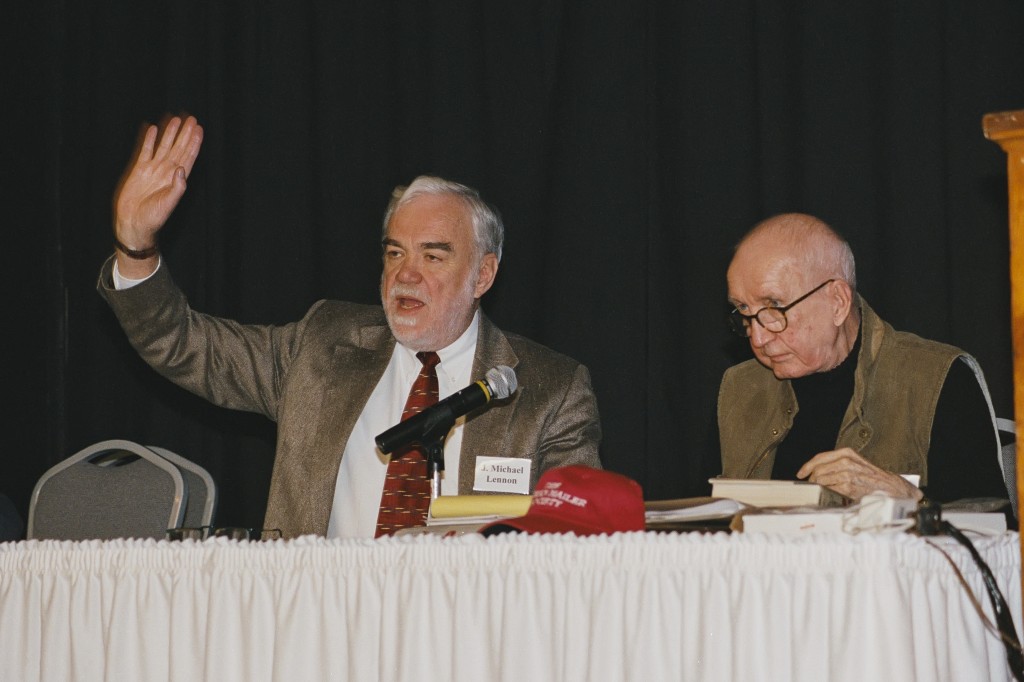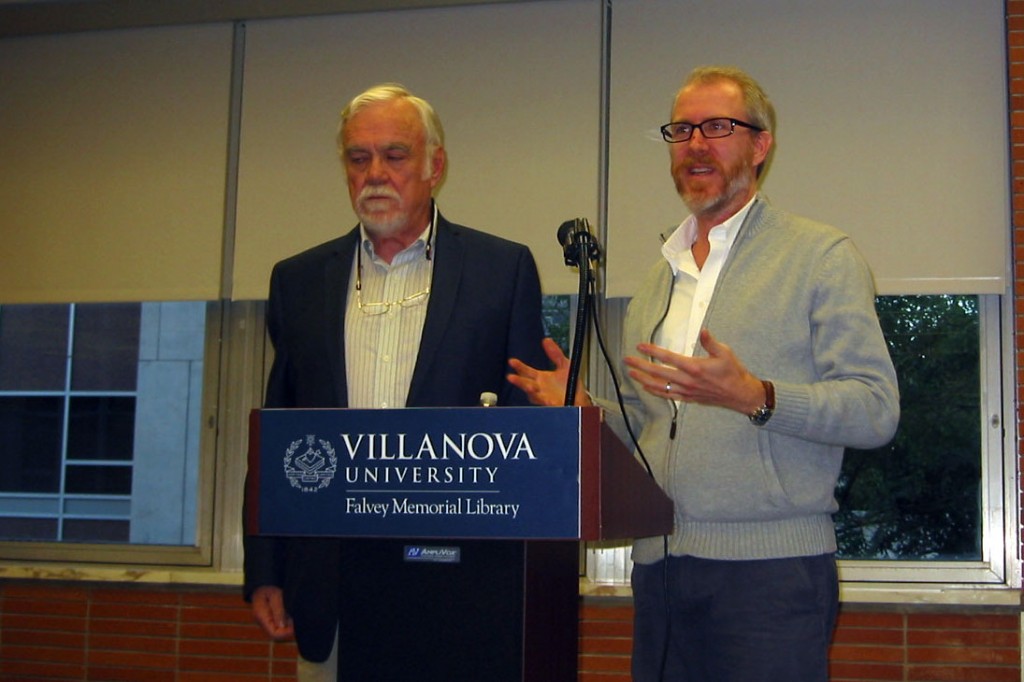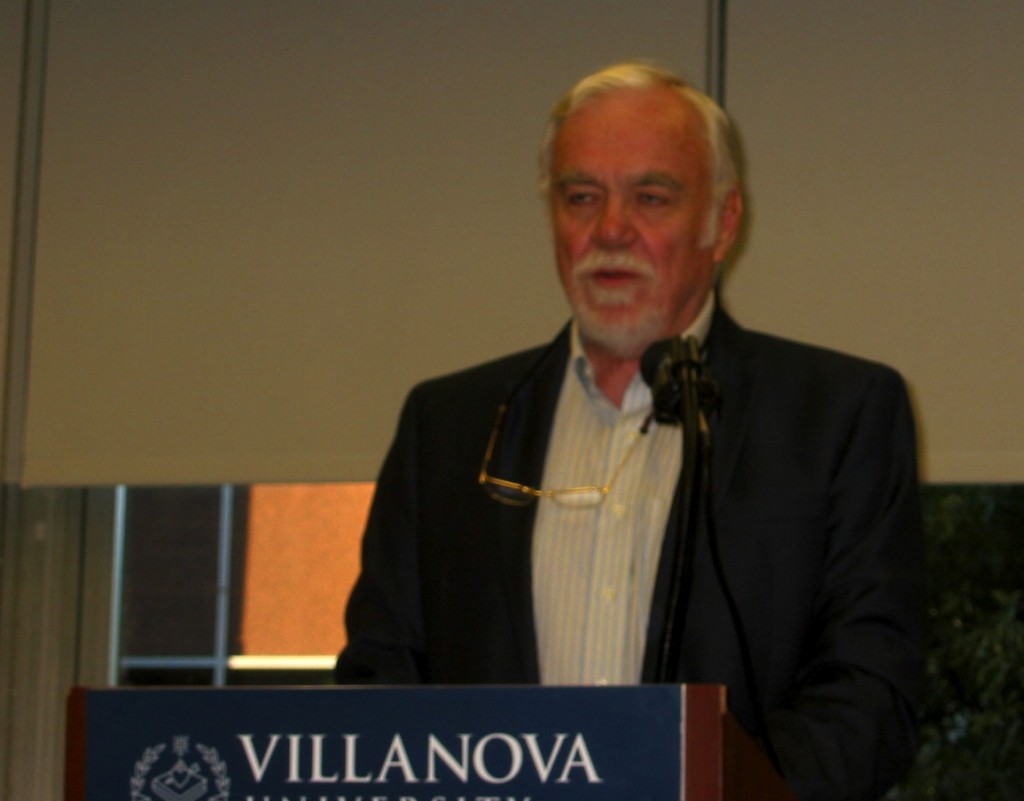Author: webmaster Page 26 of 36
7 p.m., Tuesday, Nov. 5, 2013
Ballroom, Henry Student Center
Wilkes University, 84 W. South Street, Wilkes-Barre
Book signing immediately following. Reception for Dr. Lennon following the reading in Kirby Hall.
Please RSVP by Friday, Nov. 1, to confirm your attendance at the reception by calling or emailing Rebecca Van Jura at 570-408-4306 or email [email protected]
Parking available behind Henry Student Center
Published in Narrative 7 (Fall 1977), 170-88.
“What is life but the angle of vision? A man is measured by the angle at which he looks at objects.” Emerson, “Natural History of Intellect”
Norman Mailer’s development as a writer parallels at every point his growing awareness of the difficulty, and doubtful wisdom, of attempting to separate his personal and artistic worlds. His desire to build “the radical bridge from Marx to Freud,” to link public event and private sensibility, was not announced until 1958. Before that time, incredible as it may seem given his ubiquitous presence in our literary life over the past ten or fifteen years, Mailer attempted to segregate his personal and artistic worlds. . . .
After writing and then fighting for the publication of The Deer Park, Mailer reconsidered the experience in a long essay later published in his omnibus volume, Advertisements for Myself (1959). By now, his perspective had begun to shift. The fact that he referred to Advertisements as “this muted autobiography”, and explained that he had “decided to use my personality as the armature of this work,” shows just how much his conception of the relationship between the artist and his work had begun to change. From the time of Flaubert on, writers began to see themselves more and more as aesthetic artificers and less as purveyors of the egotistical sublime. The role of the novelist as detached craftsman was refined and transmitted to the twentieth century by Conrad and James, and then further exalted by Joyce. As a young writer Mailer accepted implicitly the tradition of the novelist as a detached creator whose method was “objective” or “dramatic,” as René Wellek and Austin Warren define it, rather than the opposed tradition that Wellek and Warren call the “romantic-ironic mode.” Mailer has more in common with Rousseau than Flaubert.
Mailer’s battle with the American publishing industry over the supposed obscenity of The Deer Park was the event that punctured what he calls his “nineteenth century naïveté” and made him “a psychic outlaw.” Mailer now raked through the “personal affectations and nervous susceptibilities” that Flaubert believed the artist should transcend. Essays like “The White Negro,” “The Last Draft of The Deer Park, the “Quickly” columns from the Village Voice, and most of the “Advertisements” that connected these and other short pieces in Advertisements were direct expressions of Mailer’s latest ideas and experience. He later defined experience as “the church of one’s acquired knowledge.”
On Tuesday, Sept. 17, Norman Mailer’s official biographer, J. Michael Lennon commenced the first in a series of lectures as a part of the hybrid Irish and Africana cultural studies program. J.M. Lennon is an emeritus professor of English at Wilkes University, as well as the father of University professor Joseph Lennon, who is also the head of the Irish Studies program.
An excerpt from a review of The Executioner’s Song in the Springfield State Journal-Register, November 1979
Routinely, at Gary Gilmore’s autopsy, the doctors peeled the skin back from his face as if it were a rubber mask, sawed open his skull, removed and weighed his brain. Then looking for tumors and motor system difficulties, they sliced it up as one would a meat loaf. They found nothing remarkable. Nor did they discover any abnormalities when examining the rest of his body, including his heart, or what was left of it.
In an attempt to delineate the character of Gilmore, Norman Mailer has written a 1,000-page “true life novel,” from his release from the U. S. Penitentiary at Marion, Illinois in April 1976 to the moment nine months later when his heart was pulverized by four steel-jacketed bullets in a deserted building at Utah State Prison.
Gilmore’s cold-blooded murders of a hotel operator and a gas station attendant, his capture, trial, conviction and sentencing were given full, if routine, coverage by the Utah media. But Gilmore did not receive national attention until he fired his court-appointed defenders, waived his appeal, and demanded that his death sentence be carried out on the appointed day. Presuming a hidden motive, the Utah Attorney General, and the media, expected an eleventh-hour turnaround by Gilmore, one that would no doubt be strengthened by his fierce insistence that he be executed. It didn’t happen. Gilmore was (excuse this) dead serious.
Not since the Rosenbergs’ execution in 1953 had a capital case received such attention. Gilmore’s face appeared on the cover of Newsweek, and on T-shirts (one of which, Gilmore said with gallows humor, might be worn to the execution and then auctioned off); the wire services systematically interviewed his friends, relatives, and lawyers; his tortured love affair and suicide pact with Nicole Baker made the evening news on TV. Even his selection for the condemned man’s last meal—a six-pack of Coors—commanded the front page of major metro newspapers. Through it all, Gilmore limited his contacts with the media, having signed an exclusive access contract with Lawrence Schiller, literary entrepreneur and Mailer’s collaborator. But his refusal to talk with the press only heightened his notoriety. Gary Gilmore became a household word in America before he died.




